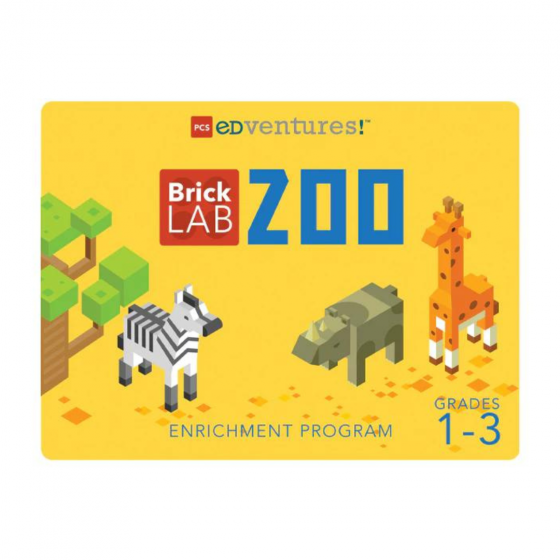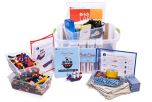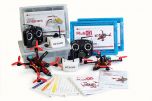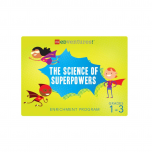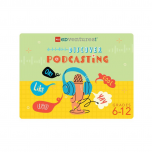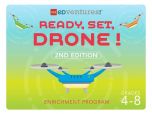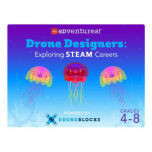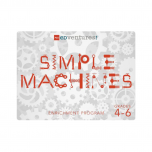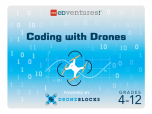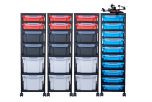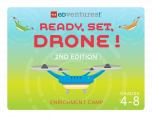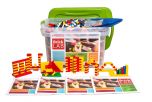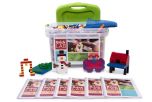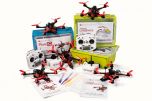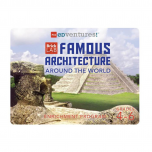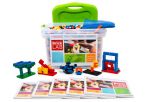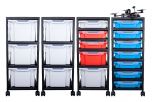BrickLAB Zoo
Traverse tricky terrain, shake claws with lobsters, and design ecosystems in this life science enrichment program. Exploring the globe, learners discover the diversity of animal adaptations, the differences in habitats, and what’s necessary for each biome’s survival through hands-on STEM activities. They’ll travel from the sands of the Sahara to the peaks of the Himalayas, investigating complex creatures as they build models of each animal, focusing-in on the biological diversity that makes them special. Through creative thinking, collaboration, and multi-subject integration, BrickLAB Zoo fosters a unique bond to the Earth’s biospheres and the vital roles animals play in them.
Grades: 1–3
Students: Up to 30
Contact Hours: 12+
Get to Know:
Subject Targets:
Life Science, Engineering Design, Math Connections, English Language Arts Connections
Recommended Settings:
- Summer Camps
- Classrooms
- Before & After-School Programs
Each Activity Includes:
- Opening & Closing Discussion
- Optional Intro Activity
- Step-By-Step Build Instructions
- Engineering Challenge
- Optional Math & English Language Arts Extensions
- Materials List
Curriculum Topics:
- The Camel
- The Lizard
- The Lobster
- The Shark
- The Crocodile
- The Monkey
- The Yak
- The Puma (Mountain Lion)
- The Giraffe
- The African (Savanna) Elephant
- Brick Zoo
- Original Adaptations
What's in the Box:
BrickLAB Zoo comes with all the supplies needed for 30 students to complete 12 one-hour activities:
- Instructor Guide: 1
- Student Build Books: 15
- Curriculum Digital Download: 1
- BrickLAB Bricks: 6500+
- Brick Separator: 1
- Mesh Bag (for cleaning bricks): 1
- Storage Tubs: 2
16 thinking habits developed by Art Costa and Bena Kallick to empower students to succeed in a 21st-century learning environment.
- Persisting
- Managing Impulsivity
- Listening with Understanding and Empathy
- Striving for Accuracy
- Questioning and Posing Problems
- Applying Past Knowledge to New Situations
- Thinking and Communicating with Clarity and Precision
- Creating, Imagining, Innovating
- Taking Responsible Risks
- Thinking Interdependently
- Remaining Open to Continuous Learning
21st Century Skills:
A set of widely-applicable abilities essential for success in the information age.
- Creativity and Innovation
- Critical Thinking and Problem Solving
- Communication and Collaboration
- Flexibility and Adaptability
- Initiative and Self-Direction
- Social and Cross-Cultural Skills
- Productivity and Accountability
© 2019 Battelle for Kids. battelleforkids.org. All Rights Reserved. Battelle for Kids was not involved in the production of this product and does not endorse it.
Common Core State Standards for Mathematics:
- CCSS.MATH.CONTENT.1.NBT.A.1 Count to 120, starting at any number less than 120. In this range, read and write numerals and represent a number of objects with a written numeral.
- CCSS.MATH.CONTENT.2.NBT.A.2 Count within 1000; skip-count by 5s, 10s, and 100s.
- CCSS.MATH.CONTENT.2.MD.A.1 Measure the length of an object by selecting and using appropriate tools such as rulers, yardsticks, meter sticks, and measuring tapes.
- CCSS.MATH.CONTENT.2.MD.A.3 Estimate lengths using units of inches, feet, centimeters, and meters.
- CCSS.MATH.CONTENT.2.MD.A.4 Measure to determine how much longer one object is than another, expressing the length difference in terms of a standard length unit.
- CCSS.MATH.CONTENT.2.MD.D.10 Draw a picture graph and a bar graph (with single-unit scale) to represent a data set with up to four categories. Solve simple put-together, take-apart, and compare problems using information presented in a bar graph.
- CCSS.MATH.CONTENT.2.OA.A.1 Use addition and subtraction within 100 to solve one- and two-step word problems involving situations of adding to, taking from, putting together, taking apart, and comparing, with unknowns in all positions, e.g., by using drawings and equations with a symbol for the unknown number to represent the problem.
- CCSS.MATH.CONTENT.3.NBT.A.2 Fluently add and subtract within 1000 using strategies and algorithms based on place value, properties of operations, and/or the relationship between addition and subtraction.
- CCSS.MATH.CONTENT.3.NBT.A.3 Multiply one-digit whole numbers by multiples of 10 in the range 10-90 (e.g., 9 × 80, 5 × 60) using strategies based on place value and properties of operations.
- CCSS.MATH.CONTENT.3.MD.A.2 Measure and estimate liquid volumes and masses of objects using standard units of grams (g), kilograms (kg), and liters (l).
Common Core State Standards for English Language Arts:
- CCSS.ELA-LITERACY.W.3.1 Write opinion pieces on topics or texts, supporting a point of view with reasons.
- CCSS.ELA-LITERACY.W.3.2 Write informative/explanatory texts to examine a topic and convey ideas and information clearly.
- CCSS.ELA-LITERACY.W.3.3 Write narratives to develop real or imagined experiences or events using effective technique, descriptive details, and clear event sequences.
- CCSS.ELA-LITERACY.W.3.4 With guidance and support from adults, produce writing in which the development and organization are appropriate to task and purpose.
© Copyright 2010. National Governors Association Center for Best Practices and Council of Chief State School Officers. All rights reserved.
Next Generation Science Standards:*
- NGSS K-2-ETS1-1 Engineering Design
- NGSS K-2-ETS1-2 Engineering Design
- NGSS 2-LS4-1 Biodiversity
* Next Generation Science Standards and NGSS is a registered trademark of WestEd. Neither WestEd nor the lead states and partners that developed the Next Generation Science Standards were involved in the production of this product, and do not endorse it.
| Manufacturer | PCS Edventures, Inc. |
|---|



